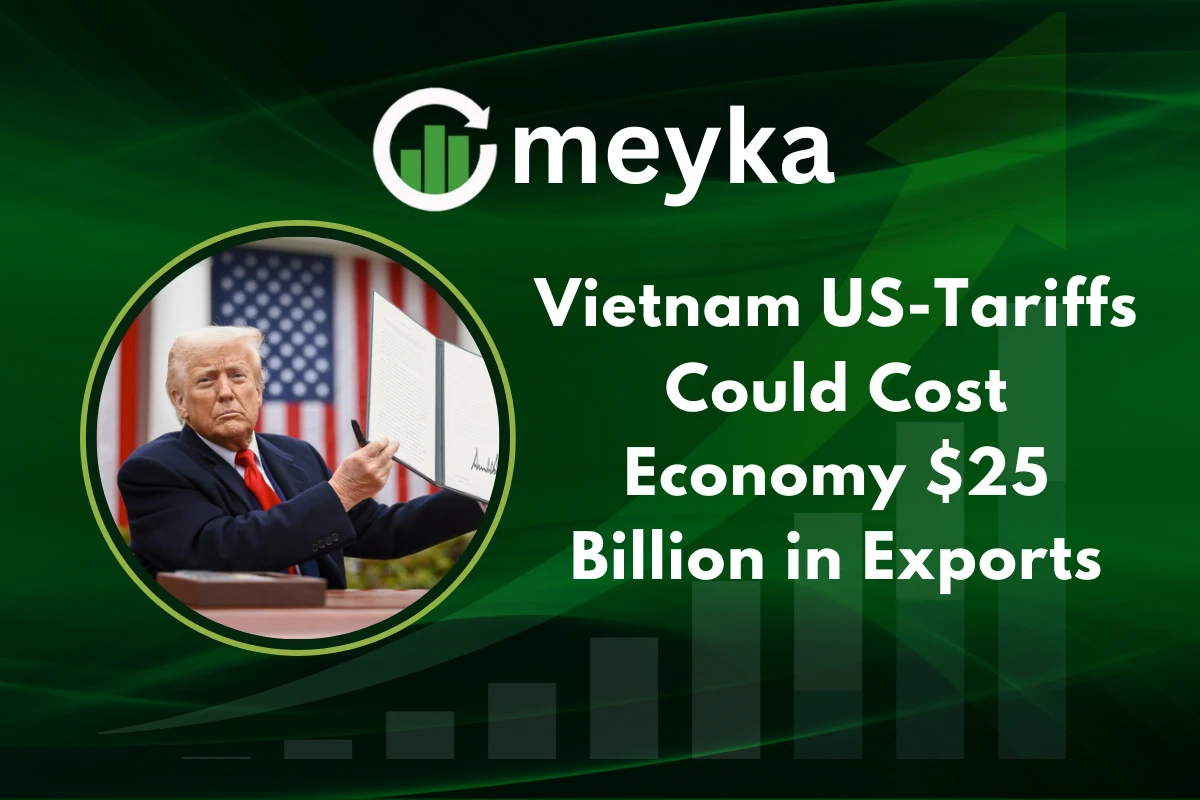Vietnam US-Tariffs Could Cost Economy $25 Billion in Exports
A United Nations estimate warns the new Vietnam-US tariffs could cost Vietnam as much as $25 billion in annual exports to the United States, a hit that would reshape trade flows across Southeast Asia.
The figure represents nearly one-fifth of Vietnam’s shipments to the U.S. in 2024, and the UN study says this worst-case scenario could shave about 5 percent off Vietnam’s GDP over time. The tariffs, applied in August, already show early signs of pressure in trade data and have prompted governments and companies to weigh options for mitigation.
Why does this $25 billion number matter? It shows how a single policy can cut deeply into exports, jobs, and economic growth for an export-dependent country.
What Do Vietnam-US Tariffs Mean for the Economy?
The Vietnam-US tariffs are a set of duties on a wide range of Vietnamese goods sold in the U.S. Under the UNDP scenario, a 20 percent duty could push U.S. demand down, and a more severe pass-through could cause larger losses.
The UN analysis notes Vietnam is one of the most exposed Southeast Asian economies because U.S. buyers account for a large share of its exports. Policymakers fear this shock will ripple through factories, suppliers, and ports.
The trade conflict in plain language
Tariffs raise the price of Vietnamese goods in the U.S., buyers reduce orders or switch suppliers, and factories in Vietnam may face lower production and layoffs. That chain is the pathway from levies to lost exports.
Who loses first when exports fall? Export workers, component suppliers, and logistics firms see the earliest falls in demand and revenue.
Why could Vietnam lose $25 billion in Exports?
The UNDP estimate models a worst-case scenario where tariff costs are fully passed to U.S. consumers, depressing demand over time. The 20 percent duties already in place led to a 2 percent drop in Vietnam’s U.S. exports in August, with footwear down 5.5 percent in the first post-tariff month.
The UN warns that, if waivers and exemptions expire or if stricter rules on transhipment are applied, losses could be even larger. The World Bank has already trimmed Vietnam’s growth outlook amid the trade shock.
Worst case versus current reality
Current data shows modest early declines, but the UN’s scenario stretches the impact over time if demand remains weak or tariffs tighten.
What assumptions drive the UN’s $25 billion estimate? The estimate assumes tariffs lower U.S. demand significantly, full pass-through of duties to consumers, and little immediate redirection of trade.
Which Sectors Will Be Hardest Hit by Vietnam-US Tariffs?
The UN analysis flags textiles, footwear, electronics, and some furniture and plastics as most vulnerable. Vietnam is a major supplier of shoes and apparel for global brands, and many electronics and components shipped to the U.S. rely on cross-border supply chains that run through China and regional partners. If re-export rules become stricter, near-term damage to electronics could be severe.
Sector snapshots
- Footwear saw an immediate 5.5 percent monthly drop in August.
- Electronics account for about 28 percent of U.S.-bound exports, and exemptions there can blunt or deepen the impact.
- Textiles and apparel face order reductions as U.S. retailers reassess sourcing.
Can Vietnam reroute exports to other markets? Yes, but diversification takes time and may not fully replace lost U.S. demand, especially for large buyers and brand contracts.
Global Supply Chains and Vietnam’s Role
Vietnam sits at the heart of Asian manufacturing networks. Multinational and U.S. firms operate factories there, relying on global inputs. The Vietnam US-Tariffs therefore reverberate beyond borders, affecting suppliers in China, component makers in ASEAN, and ocean freight lanes.
Regional partners may gain some orders, but the UN notes the overall Southeast Asian hit would still be significant, with an average 9.7 percent fall in U.S. exports for the region.
Regional spillovers matter
Shifts in sourcing can rewire regional trade, but capacity constraints and quality standards mean shifts are imperfect and can raise costs for global brands.
Will other Southeast Asian economies benefit? Some may attract redirected orders, but the scale of Vietnam’s exposure means the region as a whole feels the shock.
Expert Insights and Public Reactions
Economists warn of slower growth and higher unemployment in export hubs if tariffs persist. The UNDP’s Philip Schellekens highlighted the potential long-term damage in media briefings, urging policymakers to shore up resilience. For more commentary from Schellekens, see his public posts on X.
The story has drawn widespread coverage in global outlets and prompted emergency trade discussions in Hanoi.
What are officials saying in Hanoi? Vietnam’s trade and finance ministries are preparing mitigation steps and urging market diversification while seeking diplomatic engagement.
Vietnam’s Trade Strategy Moving Forward
Vietnam officials say they will boost product quality, pursue new markets, and strengthen regional ties through ASEAN, CPTPP, and other trade pacts. Companies may move up the value chain, focus on higher margin goods, and deepen links with European and regional buyers. Yet scaling new markets is slow, and many firms face short-term cash flow stress.
Policy tools on the table
Measures include export promotion, credit support, incentives for higher value manufacturing, and talks to preserve existing contracts with major brands.
How fast can Vietnam pivot its export mix? Structural shifts take years, but targeted support and trade diplomacy can ease the near-term pain and speed some transitions.
Long-Term Risks of Vietnam US-Tariffs
Sustained tariffs could erode investor confidence, reduce foreign direct investment, and raise inflation for consumers if trade costs are passed through. Over time, GDP growth could slow, and labor markets in export hubs may face pressure.
Even with partial mitigation, the UN cautions that the cumulative economic cost is large and could reshape regional manufacturing patterns.
What is the final takeaway for global markets? The Vietnam case shows how trade policy can quickly affect global supply chains, investment plans, and growth forecasts, and why policymakers must weigh long-term costs.
Conclusion
The UNDP warning on Vietnam-US tariffs is a stark reminder of the fragility of export-led growth in a turbulent policy environment. A $25 billion hit to U.S. exports and a potential 5 percent GDP shock would force Hanoi, exporters, and global buyers to adapt swiftly.
Short-term relief may come from waivers and buyer absorption of costs, but long-term resilience will depend on diversification, higher value production, and strong regional cooperation. The world will watch closely as trade adjustments unfold and as Vietnam navigates a fast-changing global market.
FAQ’S
The new Vietnam US-Tariffs include duties of around 20 percent on selected goods like textiles, footwear, and electronics, raising export costs significantly.
Vietnam is seeking to diversify export markets, strengthen ASEAN and EU ties, and provide support to exporters while negotiating with the U.S. for relief.
Roughly 28 percent of Vietnam’s total exports head to the United States, making it the country’s single largest trade partner and exposing it to tariff risks.
In Vietnamese, tariffs are called thuế quan, referring to taxes or duties imposed on imported or exported goods.
U.S. export tariffs are taxes applied on goods leaving the country, but in most cases, the U.S. applies tariffs on imports, such as those under the Vietnam US-Tariffs.
Disclaimer
This content is for informational purposes only and is not financial advice. Always conduct your research.






